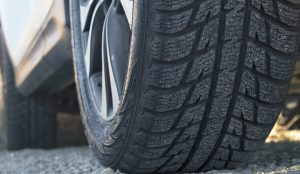Many people may assume that driving with a disability isn’t an option. But disability can come in many forms and doesn’t necessarily stop an individual from being able to get behind the wheel. However, certain adjustments and measures may need to put in place to make it safe. Here are some of the possible adjustments and requirements.
Getting Permission to Drive
 The first step to anyone with a disability is acquiring the necessary permissions to drive. Regardless of whether a person is born with a disability or medical condition or develops it later in life the process is the same. If they have a ‘notifiable’ condition – anything that could restrict safe driving – they must tell the DVLA. These conditions can include:
The first step to anyone with a disability is acquiring the necessary permissions to drive. Regardless of whether a person is born with a disability or medical condition or develops it later in life the process is the same. If they have a ‘notifiable’ condition – anything that could restrict safe driving – they must tell the DVLA. These conditions can include:
- Epilepsy
- Stroke
- Physical disability
- Visual impairment
- Other neurological or health conditions.
The DVLA must be notified whether the condition has existed prior to getting a licence, has developed after getting a licence, or has gotten worse after getting a licence. If a doctor says a person must refrain from driving for three months they must surrender their licence but can reapply after meeting the medical standard to drive.
Modifications for Driving with a Disability
Depending on the disability of the individual a car may need modifications to make it safe to use. For example, for those with lower body paralysis the pedals of a car can be converted to hand controls, often taking the form of additional paddles behind the wheel. For those with upper body impairment – such as disability in one arm – a protruding handle can be attached to the front of the wheel to aid steering. There may also be equipment not necessarily attached to the car used to help, such as specialised spectacles for visually impaired drivers.
Acquiring a Licence
 If an individual with a disability has permission from the DVLA to drive and is yet to acquire a licence the next step is finding an instructor. Of course, as the vehicle may have had adaptations made to it the instructor must be qualified to use the car and teach the learner. Beyond this, the process of learning is the same: take lessons until the individual is ready to attempt a test where an examiner will observe and decide on a pass or fail. Ultimately, as long as the individual can display the same level of confidence and competence with the approved equipment that an able-bodied driver with an ordinary vehicle can, they are able to drive legally.
If an individual with a disability has permission from the DVLA to drive and is yet to acquire a licence the next step is finding an instructor. Of course, as the vehicle may have had adaptations made to it the instructor must be qualified to use the car and teach the learner. Beyond this, the process of learning is the same: take lessons until the individual is ready to attempt a test where an examiner will observe and decide on a pass or fail. Ultimately, as long as the individual can display the same level of confidence and competence with the approved equipment that an able-bodied driver with an ordinary vehicle can, they are able to drive legally.
